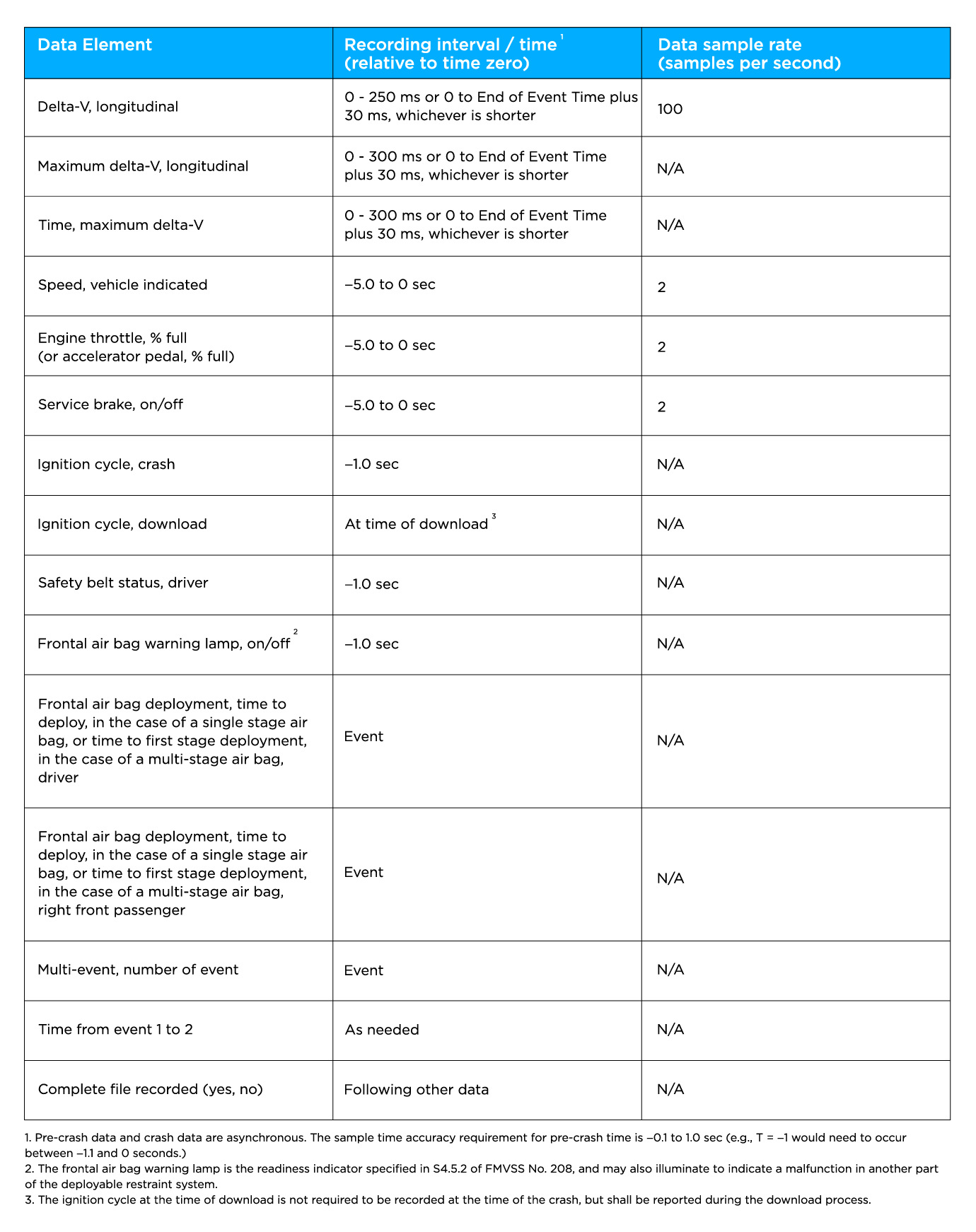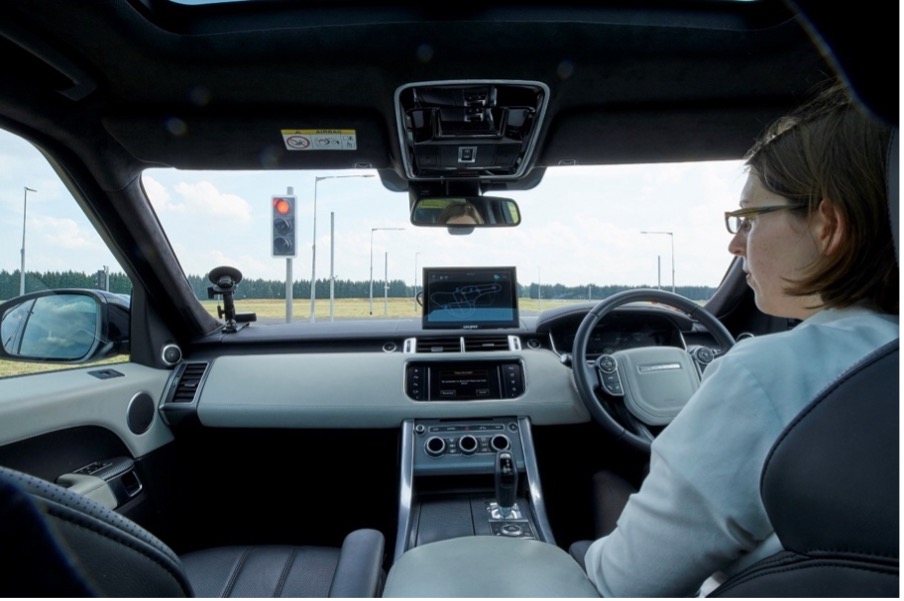In this age of autonomous driving technology, whenever there is an accident, heads turn to utilizing data from vehicle data recorders like the Event Data Recorder (EDR) or Data Storage System for Automated Driving (DSSAD) to uncover the accident cause. In today’s blog, we’ll take a closer look at the functions of the EDR and DSSAD, their differences, and their significance for accident analysis in the new era of autonomous driving.
It has become easier than ever to obtain recordings of vehicle accidents. With the combination of vehicle dashcams and nearby CCTV footage, determining the cause or perpetrator of an accident has become much more manageable than before. However, it can still be challenging to ascertain the root cause of an accident solely through video footage.
One particular type of accident that is difficult to analyze is the case of a sudden unintended acceleration (SUA). While the number of reported incidents has been decreasing this past decade, SUA accidents remain a frequent and often controversial topic of discussion. These types of accidents can be challenging to evaluate solely through video footage analysis, and this is where additional devices and data become necessary.

EDR
The Event Data Recorder or EDR is a type of data recording device that is embedded into a vehicle’s Airbag Control Unit (ACU) or the engine’s Electronic Control Unit (ECU). When a collision or a sudden incident occurs while the vehicle is in motion, the EDR records data related to vehicle operations for a specific period of time.
In many countries, there are stringent regulations on what the EDR is required to record. For example, in the United States, the National Highway Traffic Safety Administration (NHTSA) specifies requirements for EDRs under 49 CFR (Code of Federal Regulations) Part 563.

The EDR records critical vehicle data as listed above. In the case of an incident, vehicle owners can provide this information to authorities for accident analysis. The EDR plays a vital role in understanding accident dynamics and improving vehicle safety standards as a whole. The EDR is so vital, in fact, that in 2022 the NHTSA proposed to extend the EDR recording period from five seconds to 20 seconds.
This realization of the importance of EDRs is not limited to the United States. In 2021, the UNECE’s WP.29 (The World Forum for Harmonization of Vehicle Regulations) put into force UN R160, a regulation establishing provisions concerning vehicles and EDRs. R160 defines certain data collection and implementation requirements for EDRs. Following this, in 2022, the European Union approved a new act that requires the installation of an EDR in all motor vehicles in M and N categories (passenger vehicles and trucks). The regulation went into force in July of 2024 for all new vehicles.
DSSAD
The Data Storage System for Automated Driving (DSSAD) is a device designed to record and store data during autonomous driving sequences. It records and stores data on significant events related to autonomous driving, such as system activation, partial autonomous system failure, or minimal risk maneuvers. This data can then be used to address accidents and regulatory issues related to autonomous vehicles.
While DSSADs are only mandated in a handful of countries, their implementation is subject to certain regulatory measures for compliance. For instance, UNECE’s UN R157, which covers automated lane-keeping systems (ALKS), mandates DSSAD for vehicles equipped with ALKS in order to monitor status changes in the autonomous driving system (ADS).
Comparison of EDR and DSSAD
While there are similarities between EDR and DSSAD, there are core differences between the two.
- The EDR is primarily designed for investigation of conventional vehicles, while the DSSAD is specifically developed for autonomous and semi-autonomous vehicles.
- The EDR stores and provides data related to accidents just before they occur, while the DSSAD will store autonomous driving-related data for a relatively long period.
- EDR data is only stored temporarily, and is not typically retained unless a crash occurs, while the DSSAD data is retained for a longer timeframe (typically around six months), or up to a certain number of recorded events to ensure comprehensive documentation.
Despite the differences, the two complement each other in analyzing accidents and clarifying liabilities regarding an incident. A vehicle’s dashcam has limitations, so the EDR can be crucial for accident analysis. Regulations regarding DSSAD in autonomous vehicles can also clarify responsibility between driver(s) and the vehicle.
In today’s era of autonomous driving technology, both the Event Data Recorder (EDR) and the Data Storage System for Automated Driving (DSSAD) are gaining significant attention due to growing concerns about liability in the event of accidents. However, this also brings forth the issue of cybersecurity. Maintaining data integrity is essential, as both the EDR and DSSAD store and retrieve data that could influence accident investigations. Tampering with this data could not only hinder accurate accident analysis but also allow parties to misplace liability. Security measures such as data anonymization and encryption are vital for protecting sensitive information stored by the EDR and DSSAD, as well as safeguarding personal data, location information, and driving records.
EDR and DSSAD are vital tools for transparency and accountability in autonomous vehicles, but their effectiveness hinges on comprehensive cybersecurity. By implementing robust protections against data tampering and unauthorized access, these recording technologies can serve their intended purpose: helping investigators understand complex accidents, advancing autonomous driving technology, and building public trust. The path to widespread adoption requires both sophisticated data collection and unwavering security measures.
Navigating the evolving mobility landscape is complex, but cybersecurity will play a key role in building trust among manufacturers, consumers, and legislators, ultimately paving the way for a secure future.
To stay informed about the latest news on mobility tech and software-defined vehicles, subscribe to AUTOCRYPT’s monthly newsletter.






